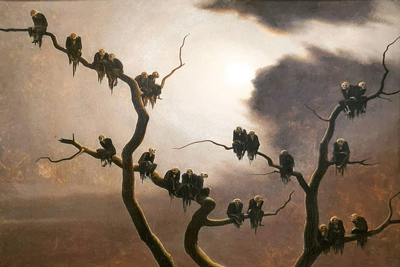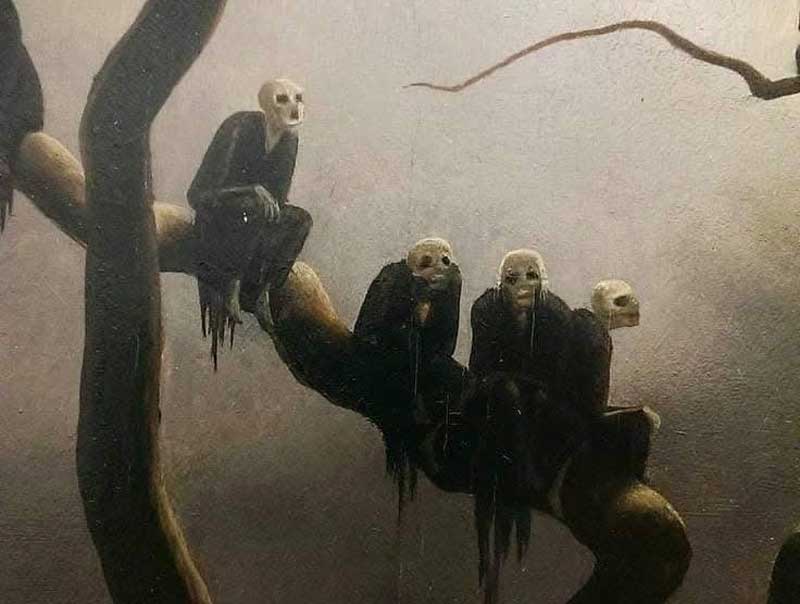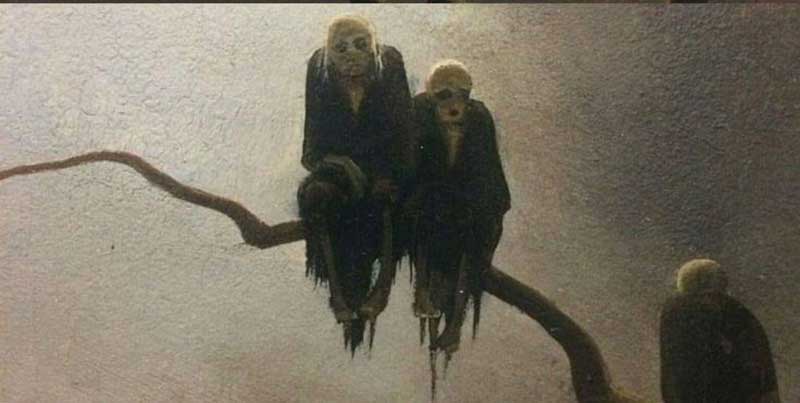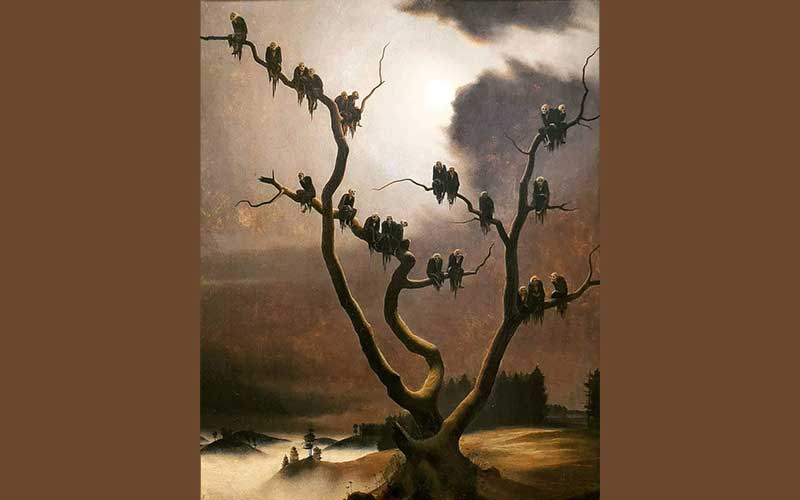
Displayed in Österreichische Galerie Belvedere, a museum housed in the Belvedere Palace in Vienna, Austria, Ghosts on a Tree, an uncanny and nightmarish painting by an Austrian painter Franz Sedlacek, lingers somewhere between surrealism and Magical Realism. At first glance, the painting seems to be a quiet night scene with a pale moon and a group of vultures on the branches of a leafless dead tree. However, a closer look reveals that those spectral figures in the picture are not birds, but are some ominous bird-like figures draped in black, or some hunched skeletal figures of hooded ghosts, while their faces resemble pale skulls, watching silently and patiently over a misty world below. Even the contorted and crooked tree resembles veins or nerves of an interrupted lifeline or a decayed memory. Taken all together, the painting creates an eerie feeling, representing an atmosphere of terrifying calmness, associated with grief and isolation, along with the weight of forgotten souls.

Reckoned by several art critics as one of the most important and unusual Austrian painters of the interwar period, Franz Sedlacek, was born on 21 January 1891 in the city of Breslau, later renamed Wrocław, Poland, which was part of the German Empire during that time. Although as a young school boy he showed his talent in drawing by creating humorous drawings and cartoons, in 1910, he moved to Vienna to study architecture, but soon switched to chemistry one year later. However, his chemistry studies were interrupted by the 1st World War, when he had to fight at the Galicia and the Isonzo front. After the war, Sedlacek returned to the university to complete his studies in chemistry, and then started working at the Technical Museum in Vienna, where he later became head of the Chemical Industry department. Although Sedlacek was not a fascist in his life, in 1939, he joined the Wehrmacht, the unified armed forces of Nazi Germany from 1935 to 1945, as during that time many men of military age in Germany were forced to serve in it. As a member of the Nazi army, he fought in Stalingrad, Norway, and Poland in the battle of Torun Fortress, and then, suddenly he was mysteriously reported to be missing on 1 February 1945. Since then, Franz Sedlacek has completely disappeared from the face of the earth, and his whereabouts are shrouded in mystery, like his mysterious paintings. There is no record proving if he became a captive or any clue of his escape from the Nazis, and finally, he was pronounced dead in 1972, but with no sign of his body.

Initially, Franz Sedlacek used to paint with only pencils and ink, but after the First World War, he gradually moved to oil painting. In 1927, he became an active member of the Vienna Secession, an art movement that emerged in Vienna, which was a reaction against the traditional conservative artistic establishment, aiming to create a space for modern, progressive art forms, and regularly participated in the Secession’s exhibitions. However, he became involved in another artistic movement known as New Objectivity, which was quite similar to Magical Realism, and it is obvious from his several paintings that his artworks were essentially different from the creations of the other fellow painters. His paintings tend to portray the darkness and onerous, bleak and disturbing atmosphere of the scary 1930s in Germany, a period of profound fear and confusion that witnessed the political upheaval in the country and the rise of the alarming Nazi regime. However, despite taking an active part and fighting in both the World Wars and living through the entire transition period of the horrible interwar era, he never stopped painting the harsh reality pervading the surrounding atmosphere. The gruesome characters with macabre looks featuring his Ghosts on a Tree are the real portrayal of the widespread repressive situation of the shady world of Austrian fascism, where ghastly shady creatures take over the human world.
